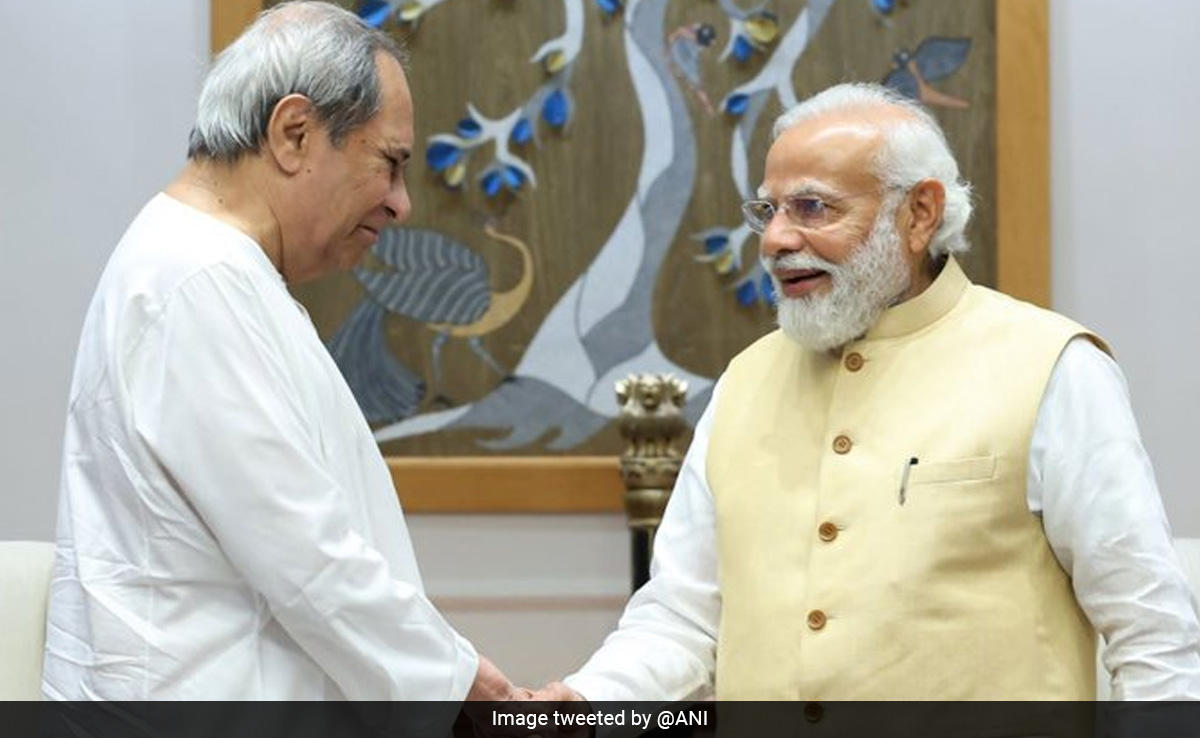
Speculation abounds regarding the potential return of the Biju Janata Dal (BJD) to the National Democratic Alliance (NDA) fold ahead of the 2024 general elections. The BJP and the BJD, erstwhile alliance partners for 11 years from 1998 to 2009, parted ways prior to the 2009 general elections due to disagreements over seat-sharing.
The recent press release from the BJD has ignited this speculation, stating, “In the discussions, it was resolved that since by 2036, Odisha will complete 100 years of its statehood”, the BJD would do everything towards this in the greater interest of the people of the state.
Since the split, the BJD has consolidated its position in the state, making gains in both the Vidhan Sabha and the Lok Sabha elections, albeit ceding some ground to the BJP in 2019.
BJP Stands To Gain
While it’s evident why the BJP would seek the support of the BJD to realise its ‘Mission 400’ for the NDA, it remains unclear why the latter would seek a tie-up with the BJP at this juncture. Surveys indicate a close contest in Odisha, with the BJD projected to win 11 seats and the BJP 10 (CNX). Additionally, the BJD faces no significant anti-incumbency sentiment in the state elections.
Naveen Patnaik remains the most popular chief minister within the state, as per C-Voter’s Mood of the Nation Survey in January 2024, and ranks fifth across India. His non-aligned approach has been successful thus far. Despite being out of the NDA, the BJD has supported the BJP in passing important bills in both houses of Parliament, with its backing being crucial in the Rajya Sabha.
Simultaneous Polls & Split Voting
The state has conducted simultaneous polls since 2004. Until 2014, it witnessed a consistent voting pattern, with voters typically voting for the same party, the BJD, in both assembly and Lok Sabha elections. The vote share of the BJD in both assembly and Lok Sabha polls from 2004 to 2019 indicates that the party garners a nearly identical vote share in both elections, with deviations within the range of +/- 2.5%.

Source: www.indiavotes.com
In 2014, the BJD secured 117 of the total 147 seats, the BJP 10, and the Congress 16 in the assembly elections. When translated to Lok Sabha seats, the projection should have been 18 for the BJD, one for the BJP, and two for the Congress. Remarkably, the actual outcome closely mirrored this projection, with the BJD securing 20 seats and the BJP one.

Source: www.indiavotes.com
In 2019, for the first time, some degree of split voting was observed. The BJD won 112 seats, the BJP 23, and Congress nine in the assembly polls. When translated to Lok Sabha seats, the projection should have been BJD 17, BJP three, and Congress one. However, the actual result was 12-8-1, respectively.
A Couple Of Reasons The BJD May Consider Joining The NDA
- Naveen Patnaik, at 77, seems to lack confidence while facing a resurgent BJP under Narendra Modi after the 2024 polls
- Failure to join the alliance before the polls could diminish Patnaik’s bargaining power post-elections, particularly if the BJP does well on its own.
- The BJP’s reduced dependence on the BJD may occur as the BJP and allies increase their numbers in the Rajya Sabha, likely achieving a majority independently in mid-April
- A leadership vacuum exists in the BJD post-Naveen era, with a potential successor in ex-bureaucrat V.K. Pandian. Naveen requires the BJP’s support for a smooth transition of power upon his retirement
- Regional parties like the BJD and the Janata Dal (United) (JD-U), lacking familial successors, are cautious of scenarios akin to the Shiv Sena or the Nationalist Congress Party (NCP). Naveen may align with the BJP to safeguard his party’s legacy and strength
- Concerns arise over a potential exodus of dissatisfied leaders due to Pandian’s outsider status. Fear persists that the BJP could exploit Odia sub-nationalism, eroding the BJD’s support base and electoral prospects
- The BJP’s aggressive expansion in eastern and southern states, leveraging the PM’s popularity and development initiatives, may pose a threat to the BJD’s Lok Sabha poll performance, potentially diminishing Naveen’s national influence
- Aligning with the BJP could enable Naveen to become the longest-serving chief minister, securing his place in history books, trailing behind Pawan Kumar Chamling by a mere 164 days as of March 7, 2024
- The BJD fears potential losses in Lok Sabha seats if the split voting pattern expands across more constituencies, as discussed above
- With Odisha approaching its centenary in 2036, resources are needed to make the occasion big. Aligning with the BJP could facilitate access to funds for Naveen’s development plans for a “Naya Odisha”
However, the proposed alliance with the BJP may offer an opportunity for the Congress in the state to consolidate the opposition vote. Whether it can capitalise on this remains uncertain.
(Amitabh Tiwari is a political strategist and commentator. In his earlier avatar, he was a corporate and investment banker.)
Disclaimer: These are the personal opinions of the author.




